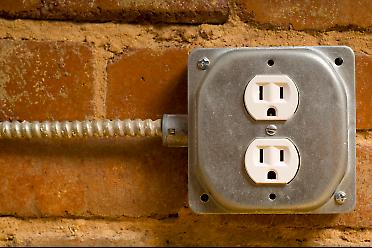Wonderful article posted by http://oscarcervantesblog.com/ . I wanted to share it will all of you….Enjoy!!!
 So according to the news, newspapers and your friend’s cousin’s friend’s aunt from his father’s side the news is grim, the sky is falling and NEW HOME sales have decreased . And we all need to start building bomb shelters ‘cuz armageddon is coming!!
So according to the news, newspapers and your friend’s cousin’s friend’s aunt from his father’s side the news is grim, the sky is falling and NEW HOME sales have decreased . And we all need to start building bomb shelters ‘cuz armageddon is coming!!
Hey, even a recent article from CNNMONEY.com said that “New home sales unexpectedly fell in July to the lowest level on record as the housing market continued to suffer from the end of the homebuyer tax credit boost. New home sales dropped 12.4% to a seasonally adjusted annual rate of 276,000 last month, down from a downwardly revised 315,000 in June, the Commerce Department reported Wednesday. Sales year-over-year fell 32.4%.”
Now the key words is NEW HOME , and there is no surprise, there, if you take in consideration that you can buy a repo, or short sale for at 15-20% discount. Recently, I took a client to see homes. Since he wanted to see new , repo and short sale homes available, I started showing him the NEW HOMES in the area that he wanted to live in. The new model homes were perfectly decorated. The yard was beautifully done, every piece of furniture was strategically placed and the house even had a fragrant smell of lavender. The builder was so nice to include cheap stainless steel appliances if you bought his nicely decorated house. It was a beautiful home with a ticket price $480,000 (without up grades of course). All up grades that made the house awesome were extras. The granite counter tops, the travertine floors, the colored cement patio, plantation shutters and the stunning custom crown molding was not included.
After seeing the NEW HOMES, he got to see some bank repo homes. The first house had no furniture, no lavender smell, yard was dead and the walls had this orange green color everywhere. But low and behold, granite counter tops, the travertine floors, the colored cement patio with cover, plantation shutters and the stunning custom crown molding everything was part of the package because the previous owner paid for it!!! Oh, and did I mention the incredible pool? Over $70,000 in upgrades and more was part of this house. Oh, and the price you ask? $430,000. A $50,000 reduction if you can get pass the dead grass and the orange green color walls….
molding everything was part of the package because the previous owner paid for it!!! Oh, and did I mention the incredible pool? Over $70,000 in upgrades and more was part of this house. Oh, and the price you ask? $430,000. A $50,000 reduction if you can get pass the dead grass and the orange green color walls….
What the news, newspapers and cousin’s friend’s aunt from his father’s side fails to understand is that you are willing to water the grass, paint the walls and even replace carpet if you are saving $40k, 50k and sometimes even $100k on the price of your new home. At least, new to you, right? But in my opinion and those who have been submitting offers, new home sales dropping are the least of our concerns. If you’ve talked to anybody that is trying to buy a house these days, especially in Southern California, they will tell you that the competition is fierce and there are more buyers than homes!! Their frustration continues to be the many offers they find that they have to compete against to get the house they want.
 I wonder if builders are getting a clue and realizing that if they want to sell their over priced new homes, they need to start being less greedy and realize that if they want the NEW HOMES SOLD, they need to start including all the up-grades that are so attractive because you are not afraid of getting your hands dirty as long as you are saving. Wouldn’t it be nice to buy one of those new houses and actually move into a model home? Hey, there’s an idea!
I wonder if builders are getting a clue and realizing that if they want to sell their over priced new homes, they need to start being less greedy and realize that if they want the NEW HOMES SOLD, they need to start including all the up-grades that are so attractive because you are not afraid of getting your hands dirty as long as you are saving. Wouldn’t it be nice to buy one of those new houses and actually move into a model home? Hey, there’s an idea!
 When should you close your FHA Streamline Refinance? At the end of the month — no question about it.
When should you close your FHA Streamline Refinance? At the end of the month — no question about it. Follow
Follow


 So according to the news, newspapers and your friend’s cousin’s friend’s aunt from his father’s side the news is grim, the sky is falling and NEW HOME sales have decreased . And we all need to start building bomb shelters ‘cuz armageddon is coming!!
So according to the news, newspapers and your friend’s cousin’s friend’s aunt from his father’s side the news is grim, the sky is falling and NEW HOME sales have decreased . And we all need to start building bomb shelters ‘cuz armageddon is coming!!





